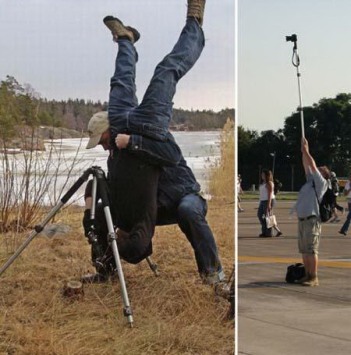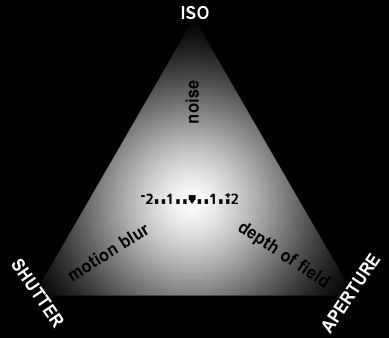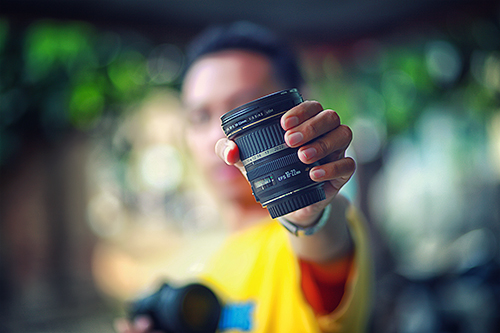
Usually, autofocus has difficulty focusing or is slow in finding a focus point because of one of the following:
1. The focus switch is still at MF (Manual Focus). Toggle your focus switch to the AF, A, or A/M setting. In Canon cameras, the switch is located only on the lens; but there are some Nikon cameras that have the focus switch on the camera body.
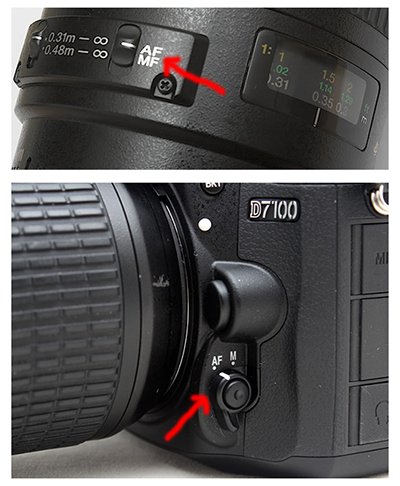
2. The distance between the camera and the object it’s trying to focus on is too close. Lenses have a minimum focal length, and they vary between different types of lenses. For example, if the minimum focal length of the lens is 30 cm and the distance between the lens and the object is 20 cm, then the lens can’t focus. The only solution here is to find out the minimum focal length of your lens and set the distance accordingly. This focal length can be seen on the lens on the focus distance window; usually in units of meter or feet.
3. You may have chosen the wrong focus area point. There are usually many focus points on a camera digital or a DSLR. These focus points can be set automatically or manually. Say a camera has 7 focus points; if you set the mode to Auto, then all 7 focus points will be active and will focus the image on the focus point nearest to an object. If you set the focus points to Manual, the lens will focus on objects within the focus areas that you’ve determined.
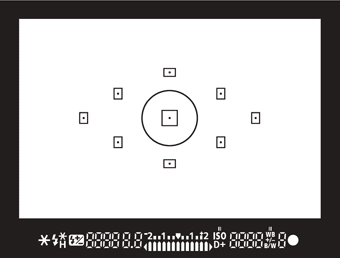
4. The object you’re trying to focus on may not be contrast enough with its background, or it may not have a distinct shape. This usually occurs when photographing walls, cloudless sky, or foggy areas. As a solution, lock the focus point on contrast areas of the frame, such as the edge of the borders of the object and then compose your framing before taking the shot.
5. The object you’re trying to focus on may be too dark or you’re in a low-light environment. With a lack of light, the camera and lens will have a difficult time determining a focus point. To cope with this, several cameras are equipped with an AF Assist feature to ease the search of a focus point. There’s also an option to use the AF Assist that exist in external flash. If your camera doesn’t have this feature and you don’t have an external flash, you can also try using a flashlight to illuminate the focus area.
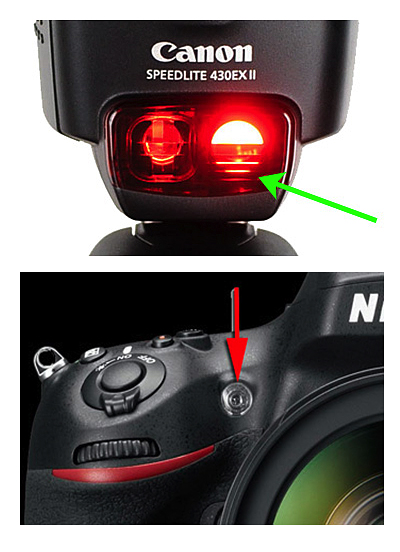
If you’ve tried all the points above and still fail to focus correctly, you can always fall back on the manual focus setting. For the highest probability of accuracy when using manual focus, activate your camera’s Live View, zoom into the object you’d like to set your focus on, and rotate the focus ring until the object appears sharp on the screen.
Home Beginner's Guide to Photography 5 Possible Reasons Your Camera’s Auto Focus isn’t Functioning Well











